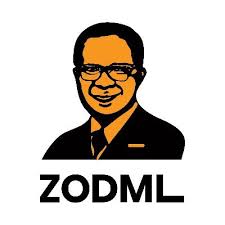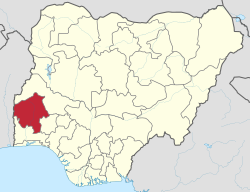INTRODUCTION
Oyo State is one of the six states that make up the South-West geopolitical zone of Nigeria. It shares an international boundary with the Republic of Benin to the West and interstate boundaries with Osun State to the East, Kwara State to the North, and Ogun State to the South. The state capital is Ibadan.
LANDMASS, LOCATION, AND POPULATION
Oyo State covers an area of 28,453 square kilometres. It lies at latitude 8°00’ North and longitude 4°00’ East. It has a population of 5,580,894 (2006 census) 7,840,864 (2016 forecast) and a population density of 196. The state accounts for 3.9% of Nigeria's total population.
HISTORY AND PEOPLE
Oyo State is chiefly inhabited by the Yorubas. The state is named after the Oyo Empire which traces its history to Oranmiyan, the son of Oduduwa, the first Ooni of Ife. The Oyo Empire rose to prominence in the fifteenth century and at its height covered large parts of Nigeria and the Republic of Benin. It declined in the face of intra-ethnic conflicts and wars against Dahomey and the Sokoto Caliphate and fell under British control in the late 19th century.
Oyo State was part of the Western Region in the three-region structure of 1954. With the creation of twelve federal states by General Yakubu Gowon’s military government in 1967, it became part of Western State. The military government of General Murtala Muhammed created nineteen states out of the existing twelve in 1976 with Oyo State as one of them. In 1991, the military government of General Ibrahim Babangida brought the number of states to twenty-seven and Osun State was carved out of Oyo State.
The state’s inhabitants include Christian and Muslims, as well as practioners of traditional religion.
MAIN TOWNS AND CITIES
Ibadan (capital), Eruwa, Igbo-Ora, Igboho, Ilora, Isoyin, Kishi, Ogbomoso, Okeho, Oyo, and Saki
LOCAL GOVERNMENT AREAS
ADMINISTRATORS AND GOVERNORS
David Jemibewon (Governor – Military): May 1976 – July 1978
Paul Tarfa (Governor – Military): July 1978 – October 1979
Bola Ige (Governor – Civilian (Unity Party of Nigeria)): October 1979 – October 1983
Victor Olunloyo (Governor – Civilian (National Party of Nigeria)): October 1983 – December 1983
Oladayo Popoola (Governor – Military): January 1984 – September 1985
Adetunji Olurin (Governor – Military): September 1985 – July 1988
Sasaenia Oresanya (Governor – Military): July 1988 – August 1990
Abdulkareem Adisa (Governor – Military): August 1990 – January 1992
Kolapo Ishola (Governor – Civilian (Social Democratic Party)): January 1992 – November 1993
Adetoye Sode (Administrator – Military): December 1993 – September 1994
Ike Nwosu (Governor – Military): September 1994 – August 1996
Ahmed Usman (Administrator – Military): August 1996 – August 1998
Edore Oyakhire (Administrator – Military): August 1996 – May 1999
Lam Adesina (Governor – Civilian (Alliance for Democracy)): May 1999 – May 2003
Rashidi Ladoja (Governor – Civilian (People’s Democratic Party)): May 2003 – January 2006
Adebayo Alao-Akala (Governor – Civilian (People’s Democratic Party)): January 2006 – December 2006
Rashidi Ladoja (Governor – Civilian (People’s Democratic Party)): December 2006 – May 2007
Adebayo Alao-Akala (Governor – Civilian (People’s Democratic Party)): May 2007 – May 2011
Abiola Ajimobi (Governor – Civilian (Action Congress of Nigeria/All Progressives Congress)): May 2011 –May 2019
Seyi Makinde (Governor – Civilian (People’s Democratic Party): May 2019 – Present
ECONOMY AND EDUCATION
The northern part of Oyo State is wood and tall grass savannah, and its south is mixed forest, savannah and grassland. Agriculture is a major economic activity in the state. Main crops in the state are corn, cassava, millet, yam, rice and plantain. Cocoa, oil palm and cashew are major cash crops. There is also a significant amount of cattle rearing with ranches in various parts of the state. Oyo State has a large amount of solid minerals such as marble, granite, red clay, kaolin and gold. A number of industries in the food sector can be found in the state.
The tertiary institutions in the state are University of Ibadan, Ladoke Akintola University of Technology, Ogbomosho; Lead City University, Ibadan; Ajayi Crowther University, Oyo; and Ibadan Polytechnic.
FAMOUS SITES AND CULTURE
Sites
Iyake Suspended Lake, Iseyin
The Iyake Suspended Lake in Iseyin is one of two recognised suspended lakes in the world, the other being the Hanging Lake in Colorado, United States. It is a bottomless lake and settles on Ado Awaye Mountain. It never dries up and its water level remains the same in the rainy season.
Idere Hills, Idere
The Idere Hills in Idere, Ibarapa area of Oyo State dates back to over 600 years. Idere town is at the base of the hills and they served as hideouts for the armies of the Oyo Empire.
Onigba Poro, Eruwa
The Onigba Poro which means angel footprints in Yoruba were formed naturally on a rock in Eruwa. They are said to be about 200 of them, with the largest one revered as scared.
Culture
The Sango Festival is celebrated annually in Oyo State and other parts of Yorubaland in honour of the god of thunder and fire. It takes place in August every year at the palace of Alaafin of Oyo. Other cultural events in the state include the New Yam and Oke Ibadan Festivals.
NOTABLE INDIGENES
Samuel Ajayi Crowther (1809 – 1891)
Samuel Ladoke Akintola (1910 -1966)
DID YOU KNOW
Ibadan is the largest city in West Africa and second in Africa after Cairo, Egypt, by landmass. It covers an area of 3,080 square kilometres.
OYO STATE IN PICTURES

